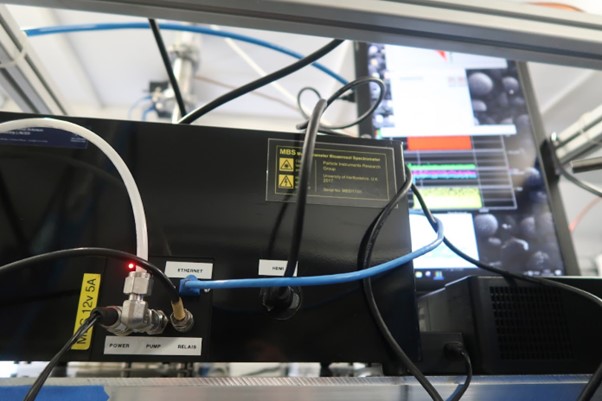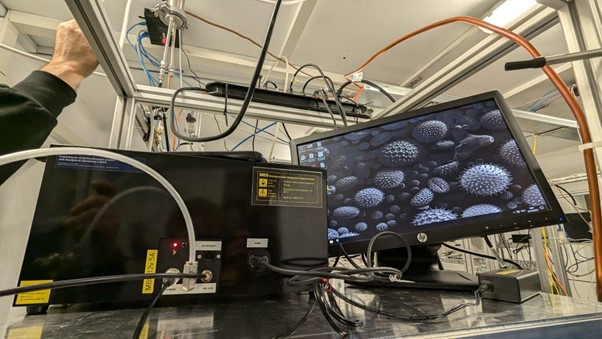
Partner: Stockholm University
PI: Assoc. Prof. Paul Zieger (paul.zieger@aces.su.se)
Operator: Dr. Aiden Jönsson (aiden.jonsson@aces.su.se)
This instrument is used to detect fluorescent aerosol particles by flashing UV light on them and measuring their fluorescence in eight channels, and to measure different optical properties (size and scattering patterns) on a particle-by-particle basis. Bioaerosols contain organic compounds that are known to fluoresce, such as amino acids and proteins. Because each particle fluoresces more or less strongly in different wavelengths of light depending on their makeup and shape, resolving their fluorescence curves allows us to make guesses about the type of bioaerosol that they are. Together with information about their size and shape, this makes it possible to try and identify the types of bioaerosols we detect using the MBS, such as differentiating between pollen, fungal spores, and bacteria.
References:
Freitas, G. P., Stolle, C., Kaye, P. H., Stanley, W., Herlemann, D. P., Salter, M. E., & Zieger, P. (2022). Emission of primary bioaerosol particles from Baltic seawater. Environmental Science: Atmospheres, 2(5), 1170-1182. https://pubs.rsc.org/en/content/articlehtml/2022/ea/d2ea00047d
Pereira Freitas, G., Adachi, K., Conen, F., Heslin-Rees, D., Krejci, R., Tobo, Y., … & Zieger, P. (2023). Regionally sourced bioaerosols drive high-temperature ice nucleating particles in the Arctic. Nature communications, 14(1), 5997. https://www.nature.com/articles/s41467-023-41696-7
